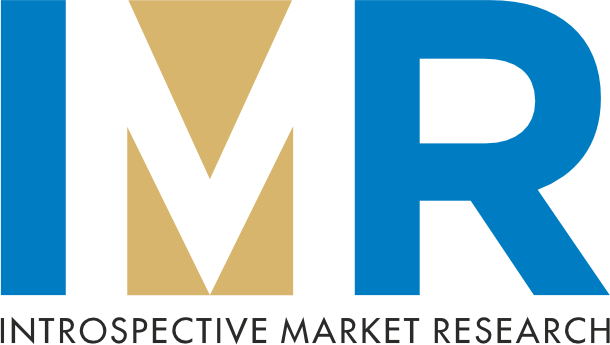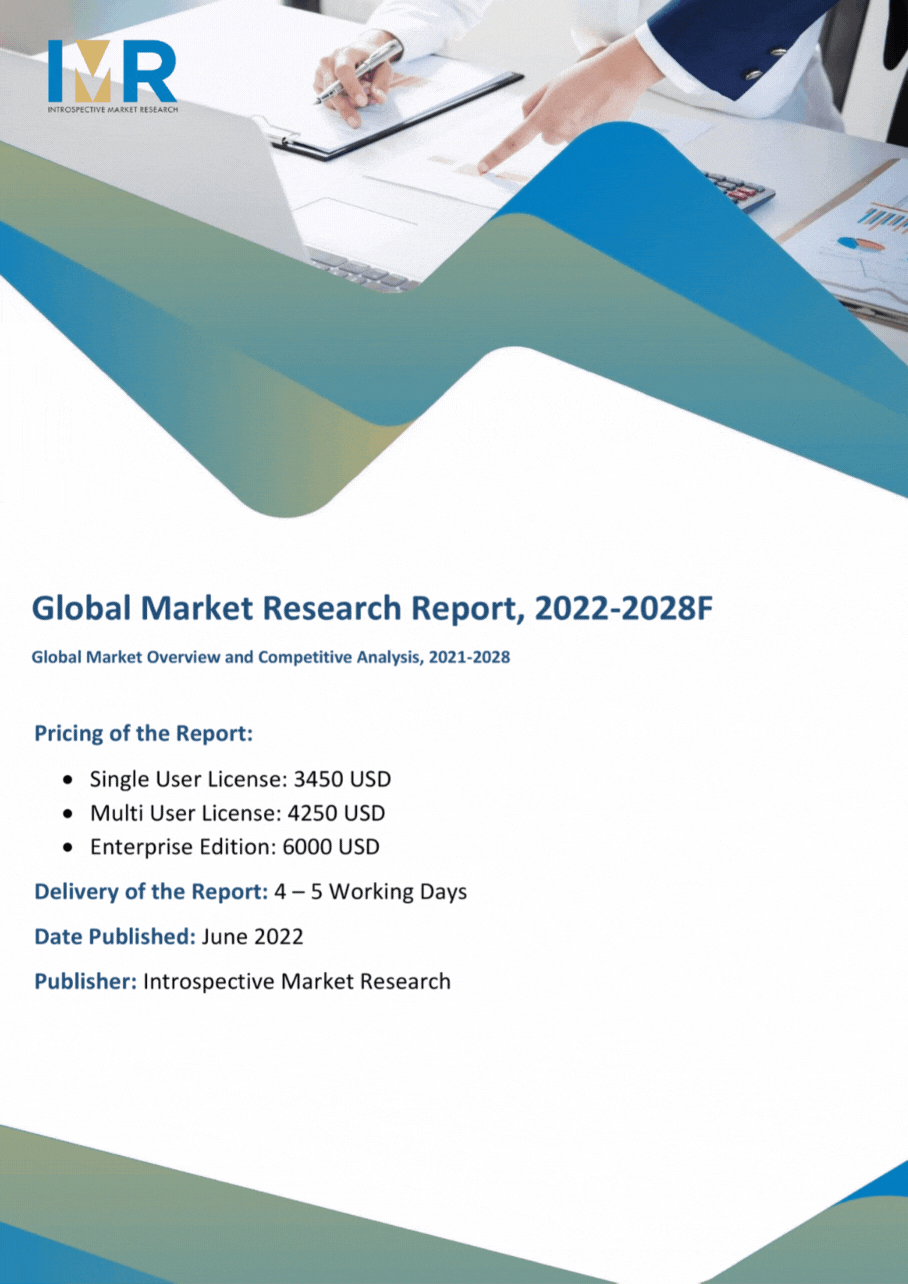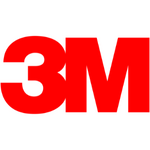Global Heat Pump Market Synopsis
Heat Pump Market size was valued at USD 58.36 billion in 2022 and is projected to reach USD 122.40 billion by 2030, growing at a CAGR of 9.7% from 2023 to 2030.
A heat pump is a versatile and energy-efficient heating and cooling system used in residential and commercial buildings. It operates by transferring heat between the indoors and outdoors, making it an eco-friendly alternative to traditional heating and cooling methods.
- The fundamental principle behind a heat pump is the movement of heat from areas of low temperature to high temperature, achieved through the use of a refrigerant and a compressor.
- During the winter months, a heat pump extracts heat from the outside air or ground (depending on the type of heat pump) and transfers it indoors to heat the building.
- In the summer, it reverses this process, removing heat from indoors and releasing it outside, effectively cooling the indoor space. This dual-functionality makes heat pumps highly efficient, as they can provide both heating and cooling with the same system.
- One key advantage of heat pumps is their energy efficiency, as they can produce up to three times more heating or cooling energy than the electrical energy they consume.
- Additionally, they are environmentally friendly, as they do not rely on fossil fuels and produce minimal greenhouse gas emissions. Heat pumps are becoming increasingly popular as a sustainable and cost-effective solution for maintaining comfortable indoor temperatures year-round, and they play a vital role in reducing our carbon footprint in the quest for more eco-friendly heating and cooling options.

Global Heat Pump Market Trend Analysis
Heat Pump Technology Contributes Significantly to Reducing the Carbon Footprint.
- Heat pump technology offers a highly energy-efficient alternative for both heating and cooling in residential, commercial, and industrial settings. Unlike traditional heating systems that rely on fossil fuels like natural gas or oil, heat pumps operate by moving heat from one place to another, utilizing electricity. This characteristic makes them inherently more efficient, with some models capable of delivering up to three times more heating or cooling energy than the electrical energy they consume. By reducing the demand for fossil fuels in heating and cooling applications, heat pumps contribute directly to lowering carbon emissions and mitigating climate change.
- The growing emphasis on renewable energy sources aligns perfectly with the heat pump's operation. As the electricity grid becomes cleaner and incorporates more renewable energy, heat pumps become even more environmentally friendly, as the electricity they use becomes less carbon-intensive. This synergy between heat pumps and renewable energy sources enhances their contribution to reducing the carbon footprint.
- Hat pump technology's role in reducing the carbon footprint is a compelling driver for its continued growth and adoption in the market. Its energy efficiency, compatibility with renewable energy sources, and alignment with sustainability goals make heat pumps a vital tool in the fight against climate change. As we prioritize eco-friendly solutions, heat pumps are poised to play an increasingly prominent role in reducing carbon emissions and fostering a more sustainable future.
The Increasing Integration Of Internet of Things (Iot) and other Advanced Technologies
- The integration of Internet of Things (IoT) and advanced technologies into the heat pump market offers a transformative opportunity for energy efficiency, user convenience, and sustainability. IoT-enabled heat pumps leverage sensors and connectivity to gather real-time data on environmental conditions, energy usage, and user behaviour. This data is then used to optimize heating and cooling operations, such as adjusting performance based on weather forecasts, occupancy patterns, and energy pricing.
- This intelligent automation not only enhances comfort but also reduces energy consumption and costs while contributing to a significant reduction in carbon emissions.
- Additionally, IoT integration allows for remote monitoring and control of heat pumps through mobile apps and web interfaces. Users can conveniently manage their systems, ensuring precise temperature control and adjustments from anywhere, thus promoting energy conservation. Furthermore, the data collected by these smart heat pumps facilitates predictive maintenance, identifying potential issues in real-time and enabling proactive scheduling of maintenance to prevent costly breakdowns.
- This holistic approach extends the lifespan of heat pump systems while minimizing their environmental impact. As IoT adoption continues to expand, heat pumps are poised to play a central role in the transition to more sustainable and efficient heating and cooling solutions, benefiting both users and the environment.
Global Heat Pump Market Segment Analysis:
Global Heat Pump Market Segmented on the basis of type, application, and end-users.
By Type, Air-To-Water Heat Pump segment is expected to dominate the market during the forecast period
- Water source heat pumps (WSHPs) are highly efficient HVAC systems that use water as a heat exchange medium to provide both heating and cooling for buildings. These systems are known for their versatility and energy-saving capabilities. WSHPs work by extracting heat from a water source, such as a well, lake, river, or a closed-loop system buried underground, and transferring it to the building during the heating season. Conversely, during the cooling season, they remove heat from the building and release it into the water source. This process is achieved through the use of refrigerant cycles and heat exchangers.
- WSHPs are also known for their adaptability to various building types and sizes, making them suitable for both residential and commercial applications. They provide precise temperature control, are environmentally friendly since they use a renewable heat source (water), and often qualify for energy efficiency incentives and certifications. As the demand for energy-efficient and sustainable HVAC solutions grows, water-source heat pumps continue to play a significant role in reducing energy consumption and greenhouse gas emissions in the building sector.
By Rated Capacity, 10-20 segment held the largest share of 8.7% in 2022
- Heat pumps in this range are suitable for heating smaller to moderately sized homes. They efficiently extract heat from the outside air (air-source heat pump), ground (ground-source or geothermal heat pump), or water (water-source heat pump) and transfer it inside to provide warmth during colder months. A 10-20 kW heat pump is capable of providing sufficient heating for spaces ranging from small apartments to medium-sized houses. The exact capacity needed depends on factors like insulation, climate, and the size of the space being heated.
Global Heat Pump Market Regional Insights:
Asia Pacific is Expected to Dominate the Market Over the Forecast period
- The Asia Pacific region boasts an abundant pool of highly skilled labor available at a cost-effective rate. This region's increasing inclination towards relocating production centers to emerging economies, particularly China and India, is anticipated to have a favourable impact on market expansion in the foreseeable future. Notably, energy-efficient solutions are poised to gain significant traction in countries like China, Japan, Indonesia, and India.
- China stands as a prominent heat pump market, driven by the government's initiatives to promote energy-efficient infrastructure. The country's extensive geographic range is divided into five distinct climate zones, each with unique thermal design requirements, offering diverse opportunities for tailored heating solutions.
- In Japan, heat pumps have gained widespread popularity in both residential and commercial sectors, with various industries adopting these systems. This trend originated decades ago and has been further accelerated by energy conservation mandates set by the Agency for Natural Resources and Energy, aiming for a substantial reduction in energy consumption by 2030.
Global Heat Pump Market Top Key Players:
- Efficiency Maine (US)
- Lennox International Inc. (US)
- Rheem Manufacturing Co. (US)
- United Technologies Corp (US)
- Carrier (US)
- Trane (US)
- Lennox (United States)
- Emerson Climate Technologies (US)
- NIBE Group (Sweden)
- Stiebel Eltron GmbH & Co. KG (De) (Germany)
- Viessmann Werke GmbH & Co. KG (Germany)
- Atlantic Gruop(France)
- Wolf Gmbh (Ariston Group) (Italy)
- Ingersoll-Rand Plc (Ireland)
- Glen Dimplex Group (Ireland)
- Johnson Controls International Plc (Ireland)
- Robert Bosch GmbH (Germany)
- NIBE (Sweden)
- Danfoss AS (Denmark)
- Midea Group (China)
- Gree Electric Appliances (China)
- Panasonic Corporation (Japan)
- Mitsubishi Electric Corporation (Japan)
- Daikin Industries Ltd (Japan)
- Flamingo Heat Pumps (Flamingo Chillers) (India)
Key Industry Developments in the Global Heat Pump Market:
- In January 2023 - Mitsubishi Electric US and Mitsubishi Electric Trane HVAC US LLC showcased their innovative heating technologies at the Consumer Electronics Show (CES) 2023, which took place in Las Vegas, United States. Specifically, the companies introduced their variable capacity heat pump technology, which is all-weather and energy efficient.
- In October 2022 - Midea Group started constructing a new base for producing, researching, and developing heat pumps in Feltre, in northern Italy, to help facilitate its international market expansion. The new base, with an investment of EUR 60 million (USD 58.75 million), is located inside a production area of Italy's Clivet, a European company involved in the design, production, and distribution of systems for cooling, heating, air ventilation and air purification for residential, commercial and industrial markets.
|
Global Heat Pump Market |
|||
|
Base Year: |
2022 |
Forecast Period: |
2023-2030 |
|
Historical Data: |
2017 to 2022 |
Market Size in 2022: |
USD 58.36 Bn. |
|
Forecast Period 2023-30 CAGR: |
9.7% |
Market Size in 2030: |
USD 122.40Bn. |
|
Segments Covered: |
By Type |
|
|
|
By Rated Capacity |
|
||
|
By Refrigerant Type |
|
||
|
By End User |
|
||
|
Key Market Drivers: |
|
||
|
Key Market Restraints: |
|
||
|
Key Opportunities: |
|
||
|
Companies Covered in the report: |
|
||
- INTRODUCTION
- RESEARCH OBJECTIVES
- RESEARCH METHODOLOGY
- RESEARCH PROCESS
- SCOPE AND COVERAGE
- Market Definition
- Key Questions Answered
- MARKET SEGMENTATION
- EXECUTIVE SUMMARY
- MARKET OVERVIEW
- GROWTH OPPORTUNITIES BY SEGMENT
- MARKET LANDSCAPE
- PORTER’S FIVE FORCES ANALYSIS
- Bargaining Power Of Supplier
- Threat Of New Entrants
- Threat Of Substitutes
- Competitive Rivalry
- Bargaining Power Among Buyers
- INDUSTRY VALUE CHAIN ANALYSIS
- MARKET DYNAMICS
- Drivers
- Restraints
- Opportunities
- Challenges
- MARKET TREND ANALYSIS
- REGULATORY LANDSCAPE
- PESTLE ANALYSIS
- PRICE TREND ANALYSIS
- PATENT ANALYSIS
- TECHNOLOGY EVALUATION
- MARKET IMPACT OF THE RUSSIA-UKRAINE WAR
- Geopolitical Market Disruptions
- Supply Chain Disruptions
- Instability in Emerging Markets
- ECOSYSTEM
- PORTER’S FIVE FORCES ANALYSIS
- HEAT PUMP MARKET BY TYPE (2016-2030)
- HEAT PUMP MARKET SNAPSHOT AND GROWTH ENGINE
- MARKET OVERVIEW
- AIR-TO-AIR HEAT PUMP
- Introduction And Market Overview
- Historic And Forecasted Market Size in Value (2016 – 2030F)
- Historic And Forecasted Market Size in Volume (2016 – 2030F)
- Key Market Trends, Growth Factors And Opportunities
- Geographic Segmentation Analysis
- AIR-TO-WATER HEAT PUMP
- WATER SOURCE HEAT PUMP
- GROUND SOURCE (GEOTHERMAL) HEAT PUMP
- HYBRID HEAT PUMP.
- HEAT PUMP MARKET BY RATED CAPACITY (2016-2030)
- HEAT PUMP MARKET SNAPSHOT AND GROWTH ENGINE
- MARKET OVERVIEW
- UP TO 10 KW
- Introduction And Market Overview
- Historic And Forecasted Market Size in Value (2016 – 2030F)
- Historic And Forecasted Market Size in Volume (2016 – 2030F)
- Key Market Trends, Growth Factors And Opportunities
- Geographic Segmentation Analysis
- 10 – 20 KW
- 20 – 30 KW
- ABOVE 30 KW
- HEAT PUMP MARKET BY REFRIGERANT TYPE (2016-2030)
- HEAT PUMP MARKET SNAPSHOT AND GROWTH ENGINE
- MARKET OVERVIEW
- R410A
- Introduction And Market Overview
- Historic And Forecasted Market Size in Value (2016 – 2030F)
- Historic And Forecasted Market Size in Volume (2016 – 2030F)
- Key Market Trends, Growth Factors And Opportunities
- Geographic Segmentation Analysis
- R407C
- R744
- HEAT PUMP MARKET BY END USER (2016-2030)
- HEAT PUMP MARKET SNAPSHOT AND GROWTH ENGINE
- MARKET OVERVIEW
- RESIDENTIAL
- Introduction And Market Overview
- Historic And Forecasted Market Size in Value (2016 – 2030F)
- Historic And Forecasted Market Size in Volume (2016 – 2030F)
- Key Market Trends, Growth Factors And Opportunities
- Geographic Segmentation Analysis
- COMMERCIAL
- INDUSTRIAL
- COMPANY PROFILES AND COMPETITIVE ANALYSIS
- COMPETITIVE LANDSCAPE
- Competitive Positioning
- Heat PUMP MARKET Share By Manufacturer (2022)
- Industry BCG Matrix
- Heat Map Analysis
- Mergers & Acquisitions
- EFFICIENCY MAINE
- Company Overview
- Key Executives
- Company Snapshot
- Role of the Company in the Market
- Sustainability and Social Responsibility
- Operating Business Segments
- Product Portfolio
- Business Performance (Production Volume, Sales Volume, Sales Margin, Production Capacity, Capacity Utilization Rate)
- Key Strategic Moves And Recent Developments
- SWOT Analysis
- COMPANYB Lennox International Inc.
- Rheem Manufacturing Co.
- United Technologies Corp
- Carrier
- Trane
- Lennox
- Emerson Climate Technologies
- NIBE Group
- Stiebel Eltron GmbH & Co. KG
- Viessmann Werke GmbH & Co. KG
- Atlantic Gruop
- Wolf Gmbh (Ariston Group)
- Ingersoll-Rand Plc
- Glen Dimplex Group
- Johnson Controls International Plc
- Robert Bosch GmbH
- NIBE
- Danfoss AS
- Midea Group
- Gree Electric Appliances
- COMPETITIVE LANDSCAPE
- GLOBAL HEAT PUMP MARKET BY REGION
- OVERVIEW
- NORTH AMERICA
- Key Market Trends, Growth Factors And Opportunities
- Key Manufacturers
- Historic And Forecasted Market Size By Type
- Historic And Forecasted Market Size By Rated Capacity
- Historic And Forecasted Market Size By Refrigerant Type
- Historic And Forecasted Market Size By End User
- Historic And Forecasted Market Size By Country
- USA
- Canada
- Mexico
- EASTERN EUROPE
- Key Market Trends, Growth Factors And Opportunities
- Key Manufacturers
- Historic And Forecasted Market Size By Segments
- Historic And Forecasted Market Size By Country
- Russia
- Bulgaria
- The Czech Republic
- Hungary
- Poland
- Romania
- Rest Of Eastern Europe
- WESTERN EUROPE
- Key Market Trends, Growth Factors And Opportunities
- Key Manufacturers
- Historic And Forecasted Market Size By Segments
- Historic And Forecasted Market Size By Country
- Germany
- United Kingdom
- France
- The Netherlands
- Italy
- Spain
- Rest Of Western Europe
- ASIA PACIFIC
- Key Market Trends, Growth Factors And Opportunities
- Key Manufacturers
- Historic And Forecasted Market Size By Segments
- Historic And Forecasted Market Size By Country
- China
- India
- Japan
- South Korea
- Malaysia
- Thailand
- Vietnam
- The Philippines
- Australia
- New-Zealand
- Rest Of APAC
- MIDDLE EAST & AFRICA
- Key Market Trends, Growth Factors And Opportunities
- Key Manufacturers
- Historic And Forecasted Market Size By Segments
- Historic And Forecasted Market Size By Country
- Turkey
- Bahrain
- Kuwait
- Saudi Arabia
- Qatar
- UAE
- Israel
- South Africa
- SOUTH AMERICA
- Key Market Trends, Growth Factors And Opportunities
- Key Manufacturers
- Historic And Forecasted Market Size By Segments
- Historic And Forecasted Market Size By Country
- Brazil
- Argentina
- Rest of South America
- INVESTMENT ANALYSIS
- ANALYST VIEWPOINT AND CONCLUSION
- Recommendations and Concluding Analysis
- Potential Market Strategies
|
Global Heat Pump Market |
|||
|
Base Year: |
2022 |
Forecast Period: |
2023-2030 |
|
Historical Data: |
2017 to 2022 |
Market Size in 2022: |
USD 58.36 Bn. |
|
Forecast Period 2023-30 CAGR: |
9.7% |
Market Size in 2030: |
USD 122.40Bn. |
|
Segments Covered: |
By Type |
|
|
|
By Rated Capacity |
|
||
|
By Refrigerant Type |
|
||
|
By End User |
|
||
|
Key Market Drivers: |
|
||
|
Key Market Restraints: |
|
||
|
Key Opportunities: |
|
||
|
Companies Covered in the report: |
|
||
LIST OF TABLES
TABLE 001. EXECUTIVE SUMMARY
TABLE 002. HEAT PUMP MARKET BARGAINING POWER OF SUPPLIERS
TABLE 003. HEAT PUMP MARKET BARGAINING POWER OF CUSTOMERS
TABLE 004. HEAT PUMP MARKET COMPETITIVE RIVALRY
TABLE 005. HEAT PUMP MARKET THREAT OF NEW ENTRANTS
TABLE 006. HEAT PUMP MARKET THREAT OF SUBSTITUTES
TABLE 007. HEAT PUMP MARKET BY TYPE
TABLE 008. AIR-TO-AIR HEAT PUMP MARKET OVERVIEW (2016-2030)
TABLE 009. AIR-TO-WATER HEAT PUMP MARKET OVERVIEW (2016-2030)
TABLE 010. WATER SOURCE HEAT PUMP MARKET OVERVIEW (2016-2030)
TABLE 011. GROUND SOURCE (GEOTHERMAL) HEAT PUMP MARKET OVERVIEW (2016-2030)
TABLE 012. HYBRID HEAT PUMP MARKET OVERVIEW (2016-2030)
TABLE 013. HEAT PUMP MARKET BY RATED CAPACITY
TABLE 014. UP TO 10 KW MARKET OVERVIEW (2016-2030)
TABLE 015. 10 – 20 KW MARKET OVERVIEW (2016-2030)
TABLE 016. 20 – 30 KW MARKET OVERVIEW (2016-2030)
TABLE 017. ABOVE 30 KW MARKET OVERVIEW (2016-2030)
TABLE 018. HEAT PUMP MARKET BY REFRIGERANT TYPE
TABLE 019. R410A MARKET OVERVIEW (2016-2030)
TABLE 020. R407C MARKET OVERVIEW (2016-2030)
TABLE 021. R744 MARKET OVERVIEW (2016-2030)
TABLE 022. OTHERS MARKET OVERVIEW (2016-2030)
TABLE 023. HEAT PUMP MARKET BY END USER
TABLE 024. RESIDENTIAL MARKET OVERVIEW (2016-2030)
TABLE 025. COMMERCIAL MARKET OVERVIEW (2016-2030)
TABLE 026. INDUSTRIAL MARKET OVERVIEW (2016-2030)
TABLE 027. NORTH AMERICA HEAT PUMP MARKET, BY TYPE (2016-2030)
TABLE 028. NORTH AMERICA HEAT PUMP MARKET, BY RATED CAPACITY (2016-2030)
TABLE 029. NORTH AMERICA HEAT PUMP MARKET, BY REFRIGERANT TYPE (2016-2030)
TABLE 030. NORTH AMERICA HEAT PUMP MARKET, BY END USER (2016-2030)
TABLE 031. N HEAT PUMP MARKET, BY COUNTRY (2016-2030)
TABLE 032. EASTERN EUROPE HEAT PUMP MARKET, BY TYPE (2016-2030)
TABLE 033. EASTERN EUROPE HEAT PUMP MARKET, BY RATED CAPACITY (2016-2030)
TABLE 034. EASTERN EUROPE HEAT PUMP MARKET, BY REFRIGERANT TYPE (2016-2030)
TABLE 035. EASTERN EUROPE HEAT PUMP MARKET, BY END USER (2016-2030)
TABLE 036. HEAT PUMP MARKET, BY COUNTRY (2016-2030)
TABLE 037. WESTERN EUROPE HEAT PUMP MARKET, BY TYPE (2016-2030)
TABLE 038. WESTERN EUROPE HEAT PUMP MARKET, BY RATED CAPACITY (2016-2030)
TABLE 039. WESTERN EUROPE HEAT PUMP MARKET, BY REFRIGERANT TYPE (2016-2030)
TABLE 040. WESTERN EUROPE HEAT PUMP MARKET, BY END USER (2016-2030)
TABLE 041. HEAT PUMP MARKET, BY COUNTRY (2016-2030)
TABLE 042. ASIA PACIFIC HEAT PUMP MARKET, BY TYPE (2016-2030)
TABLE 043. ASIA PACIFIC HEAT PUMP MARKET, BY RATED CAPACITY (2016-2030)
TABLE 044. ASIA PACIFIC HEAT PUMP MARKET, BY REFRIGERANT TYPE (2016-2030)
TABLE 045. ASIA PACIFIC HEAT PUMP MARKET, BY END USER (2016-2030)
TABLE 046. HEAT PUMP MARKET, BY COUNTRY (2016-2030)
TABLE 047. MIDDLE EAST & AFRICA HEAT PUMP MARKET, BY TYPE (2016-2030)
TABLE 048. MIDDLE EAST & AFRICA HEAT PUMP MARKET, BY RATED CAPACITY (2016-2030)
TABLE 049. MIDDLE EAST & AFRICA HEAT PUMP MARKET, BY REFRIGERANT TYPE (2016-2030)
TABLE 050. MIDDLE EAST & AFRICA HEAT PUMP MARKET, BY END USER (2016-2030)
TABLE 051. HEAT PUMP MARKET, BY COUNTRY (2016-2030)
TABLE 052. SOUTH AMERICA HEAT PUMP MARKET, BY TYPE (2016-2030)
TABLE 053. SOUTH AMERICA HEAT PUMP MARKET, BY RATED CAPACITY (2016-2030)
TABLE 054. SOUTH AMERICA HEAT PUMP MARKET, BY REFRIGERANT TYPE (2016-2030)
TABLE 055. SOUTH AMERICA HEAT PUMP MARKET, BY END USER (2016-2030)
TABLE 056. HEAT PUMP MARKET, BY COUNTRY (2016-2030)
TABLE 057. EFFICIENCY MAINE (US): SNAPSHOT
TABLE 058. EFFICIENCY MAINE (US): BUSINESS PERFORMANCE
TABLE 059. EFFICIENCY MAINE (US): PRODUCT PORTFOLIO
TABLE 060. EFFICIENCY MAINE (US): KEY STRATEGIC MOVES AND DEVELOPMENTS
TABLE 060. LENNOX INTERNATIONAL INC. (US): SNAPSHOT
TABLE 061. LENNOX INTERNATIONAL INC. (US): BUSINESS PERFORMANCE
TABLE 062. LENNOX INTERNATIONAL INC. (US): PRODUCT PORTFOLIO
TABLE 063. LENNOX INTERNATIONAL INC. (US): KEY STRATEGIC MOVES AND DEVELOPMENTS
TABLE 063. RHEEM MANUFACTURING CO. (US): SNAPSHOT
TABLE 064. RHEEM MANUFACTURING CO. (US): BUSINESS PERFORMANCE
TABLE 065. RHEEM MANUFACTURING CO. (US): PRODUCT PORTFOLIO
TABLE 066. RHEEM MANUFACTURING CO. (US): KEY STRATEGIC MOVES AND DEVELOPMENTS
TABLE 066. UNITED TECHNOLOGIES CORP (US): SNAPSHOT
TABLE 067. UNITED TECHNOLOGIES CORP (US): BUSINESS PERFORMANCE
TABLE 068. UNITED TECHNOLOGIES CORP (US): PRODUCT PORTFOLIO
TABLE 069. UNITED TECHNOLOGIES CORP (US): KEY STRATEGIC MOVES AND DEVELOPMENTS
TABLE 069. TRANE INC. (TRANE TECHNOLOGIES PLC) (IRELAND): SNAPSHOT
TABLE 070. TRANE INC. (TRANE TECHNOLOGIES PLC) (IRELAND): BUSINESS PERFORMANCE
TABLE 071. TRANE INC. (TRANE TECHNOLOGIES PLC) (IRELAND): PRODUCT PORTFOLIO
TABLE 072. TRANE INC. (TRANE TECHNOLOGIES PLC) (IRELAND): KEY STRATEGIC MOVES AND DEVELOPMENTS
TABLE 072. NIBE GROUP (SWEDEN): SNAPSHOT
TABLE 073. NIBE GROUP (SWEDEN): BUSINESS PERFORMANCE
TABLE 074. NIBE GROUP (SWEDEN): PRODUCT PORTFOLIO
TABLE 075. NIBE GROUP (SWEDEN): KEY STRATEGIC MOVES AND DEVELOPMENTS
TABLE 075. STIEBEL ELTRON GMBH & CO. KG (DE) (GERMANY): SNAPSHOT
TABLE 076. STIEBEL ELTRON GMBH & CO. KG (DE) (GERMANY): BUSINESS PERFORMANCE
TABLE 077. STIEBEL ELTRON GMBH & CO. KG (DE) (GERMANY): PRODUCT PORTFOLIO
TABLE 078. STIEBEL ELTRON GMBH & CO. KG (DE) (GERMANY): KEY STRATEGIC MOVES AND DEVELOPMENTS
TABLE 078. VIESSMANN WERKE GMBH & CO. KG (GERMANY): SNAPSHOT
TABLE 079. VIESSMANN WERKE GMBH & CO. KG (GERMANY): BUSINESS PERFORMANCE
TABLE 080. VIESSMANN WERKE GMBH & CO. KG (GERMANY): PRODUCT PORTFOLIO
TABLE 081. VIESSMANN WERKE GMBH & CO. KG (GERMANY): KEY STRATEGIC MOVES AND DEVELOPMENTS
TABLE 081. WOLF GMBH (ARISTON GROUP) (ITALY): SNAPSHOT
TABLE 082. WOLF GMBH (ARISTON GROUP) (ITALY): BUSINESS PERFORMANCE
TABLE 083. WOLF GMBH (ARISTON GROUP) (ITALY): PRODUCT PORTFOLIO
TABLE 084. WOLF GMBH (ARISTON GROUP) (ITALY): KEY STRATEGIC MOVES AND DEVELOPMENTS
TABLE 084. INGERSOLL-RAND PLC (IRELAND): SNAPSHOT
TABLE 085. INGERSOLL-RAND PLC (IRELAND): BUSINESS PERFORMANCE
TABLE 086. INGERSOLL-RAND PLC (IRELAND): PRODUCT PORTFOLIO
TABLE 087. INGERSOLL-RAND PLC (IRELAND): KEY STRATEGIC MOVES AND DEVELOPMENTS
TABLE 087. GLEN DIMPLEX GROUP (IRELAND): SNAPSHOT
TABLE 088. GLEN DIMPLEX GROUP (IRELAND): BUSINESS PERFORMANCE
TABLE 089. GLEN DIMPLEX GROUP (IRELAND): PRODUCT PORTFOLIO
TABLE 090. GLEN DIMPLEX GROUP (IRELAND): KEY STRATEGIC MOVES AND DEVELOPMENTS
TABLE 090. JOHNSON CONTROLS INTERNATIONAL PLC (IRELAND): SNAPSHOT
TABLE 091. JOHNSON CONTROLS INTERNATIONAL PLC (IRELAND): BUSINESS PERFORMANCE
TABLE 092. JOHNSON CONTROLS INTERNATIONAL PLC (IRELAND): PRODUCT PORTFOLIO
TABLE 093. JOHNSON CONTROLS INTERNATIONAL PLC (IRELAND): KEY STRATEGIC MOVES AND DEVELOPMENTS
TABLE 093. ROBERT BOSCH GMBH (GERMANY): SNAPSHOT
TABLE 094. ROBERT BOSCH GMBH (GERMANY): BUSINESS PERFORMANCE
TABLE 095. ROBERT BOSCH GMBH (GERMANY): PRODUCT PORTFOLIO
TABLE 096. ROBERT BOSCH GMBH (GERMANY): KEY STRATEGIC MOVES AND DEVELOPMENTS
TABLE 096. DANFOSS AS (DENMARK): SNAPSHOT
TABLE 097. DANFOSS AS (DENMARK): BUSINESS PERFORMANCE
TABLE 098. DANFOSS AS (DENMARK): PRODUCT PORTFOLIO
TABLE 099. DANFOSS AS (DENMARK): KEY STRATEGIC MOVES AND DEVELOPMENTS
TABLE 099. MIDEA GROUP (CHINA): SNAPSHOT
TABLE 100. MIDEA GROUP (CHINA): BUSINESS PERFORMANCE
TABLE 101. MIDEA GROUP (CHINA): PRODUCT PORTFOLIO
TABLE 102. MIDEA GROUP (CHINA): KEY STRATEGIC MOVES AND DEVELOPMENTS
TABLE 102. PANASONIC CORPORATION (JAPAN): SNAPSHOT
TABLE 103. PANASONIC CORPORATION (JAPAN): BUSINESS PERFORMANCE
TABLE 104. PANASONIC CORPORATION (JAPAN): PRODUCT PORTFOLIO
TABLE 105. PANASONIC CORPORATION (JAPAN): KEY STRATEGIC MOVES AND DEVELOPMENTS
TABLE 105. MITSUBISHI ELECTRIC CORPORATION (JAPAN): SNAPSHOT
TABLE 106. MITSUBISHI ELECTRIC CORPORATION (JAPAN): BUSINESS PERFORMANCE
TABLE 107. MITSUBISHI ELECTRIC CORPORATION (JAPAN): PRODUCT PORTFOLIO
TABLE 108. MITSUBISHI ELECTRIC CORPORATION (JAPAN): KEY STRATEGIC MOVES AND DEVELOPMENTS
TABLE 108. DAIKIN INDUSTRIES LTD (JAPAN): SNAPSHOT
TABLE 109. DAIKIN INDUSTRIES LTD (JAPAN): BUSINESS PERFORMANCE
TABLE 110. DAIKIN INDUSTRIES LTD (JAPAN): PRODUCT PORTFOLIO
TABLE 111. DAIKIN INDUSTRIES LTD (JAPAN): KEY STRATEGIC MOVES AND DEVELOPMENTS
TABLE 111. FLAMINGO HEAT PUMPS (FLAMINGO CHILLERS) (INDIA): SNAPSHOT
TABLE 112. FLAMINGO HEAT PUMPS (FLAMINGO CHILLERS) (INDIA): BUSINESS PERFORMANCE
TABLE 113. FLAMINGO HEAT PUMPS (FLAMINGO CHILLERS) (INDIA): PRODUCT PORTFOLIO
TABLE 114. FLAMINGO HEAT PUMPS (FLAMINGO CHILLERS) (INDIA): KEY STRATEGIC MOVES AND DEVELOPMENTS
TABLE 114. OTHER MAJOR PLAYERS: SNAPSHOT
TABLE 115. OTHER MAJOR PLAYERS: BUSINESS PERFORMANCE
TABLE 116. OTHER MAJOR PLAYERS: PRODUCT PORTFOLIO
TABLE 117. OTHER MAJOR PLAYERS: KEY STRATEGIC MOVES AND DEVELOPMENTS
LIST OF FIGURES
FIGURE 001. YEARS CONSIDERED FOR ANALYSIS
FIGURE 002. SCOPE OF THE STUDY
FIGURE 003. HEAT PUMP MARKET OVERVIEW BY REGIONS
FIGURE 004. PORTER'S FIVE FORCES ANALYSIS
FIGURE 005. BARGAINING POWER OF SUPPLIERS
FIGURE 006. COMPETITIVE RIVALRYFIGURE 007. THREAT OF NEW ENTRANTS
FIGURE 008. THREAT OF SUBSTITUTES
FIGURE 009. VALUE CHAIN ANALYSIS
FIGURE 010. PESTLE ANALYSIS
FIGURE 011. HEAT PUMP MARKET OVERVIEW BY TYPE
FIGURE 012. AIR-TO-AIR HEAT PUMP MARKET OVERVIEW (2016-2030)
FIGURE 013. AIR-TO-WATER HEAT PUMP MARKET OVERVIEW (2016-2030)
FIGURE 014. WATER SOURCE HEAT PUMP MARKET OVERVIEW (2016-2030)
FIGURE 015. GROUND SOURCE (GEOTHERMAL) HEAT PUMP MARKET OVERVIEW (2016-2030)
FIGURE 016. HYBRID HEAT PUMP MARKET OVERVIEW (2016-2030)
FIGURE 017. HEAT PUMP MARKET OVERVIEW BY RATED CAPACITY
FIGURE 018. UP TO 10 KW MARKET OVERVIEW (2016-2030)
FIGURE 019. 10 – 20 KW MARKET OVERVIEW (2016-2030)
FIGURE 020. 20 – 30 KW MARKET OVERVIEW (2016-2030)
FIGURE 021. ABOVE 30 KW MARKET OVERVIEW (2016-2030)
FIGURE 022. HEAT PUMP MARKET OVERVIEW BY REFRIGERANT TYPE
FIGURE 023. R410A MARKET OVERVIEW (2016-2030)
FIGURE 024. R407C MARKET OVERVIEW (2016-2030)
FIGURE 025. R744 MARKET OVERVIEW (2016-2030)
FIGURE 026. OTHERS MARKET OVERVIEW (2016-2030)
FIGURE 027. HEAT PUMP MARKET OVERVIEW BY END USER
FIGURE 028. RESIDENTIAL MARKET OVERVIEW (2016-2030)
FIGURE 029. COMMERCIAL MARKET OVERVIEW (2016-2030)
FIGURE 030. INDUSTRIAL MARKET OVERVIEW (2016-2030)
FIGURE 031. NORTH AMERICA HEAT PUMP MARKET OVERVIEW BY COUNTRY (2016-2030)
FIGURE 032. EASTERN EUROPE HEAT PUMP MARKET OVERVIEW BY COUNTRY (2016-2030)
FIGURE 033. WESTERN EUROPE HEAT PUMP MARKET OVERVIEW BY COUNTRY (2016-2030)
FIGURE 034. ASIA PACIFIC HEAT PUMP MARKET OVERVIEW BY COUNTRY (2016-2030)
FIGURE 035. MIDDLE EAST & AFRICA HEAT PUMP MARKET OVERVIEW BY COUNTRY (2016-2030)
FIGURE 036. SOUTH AMERICA HEAT PUMP MARKET OVERVIEW BY COUNTRY (2016-2030)
Frequently Asked Questions :
The forecast period in the Global Heat Pump Market research report is 2023-2030.
Efficiency Maine (US), Lennox International Inc. (US), Rheem Manufacturing Co. (US), United Technologies Corp (US) , Trane Inc. (Trane Technologies PLC) (Ireland), NIBE Group (Sweden), Stiebel Eltron GmbH & Co. KG (De) (Germany), Viessmann Werke GmbH & Co. KG (Germany), Wolf Gmbh (Ariston Group) (Italy), Ingersoll-Rand Plc (Ireland), Glen Dimplex Group (Ireland), Johnson Controls International Plc (Ireland), Robert Bosch GmbH (Germany), Danfoss AS (Denmark), Midea Group (China), Panasonic Corporation (Japan), Mitsubishi Electric Corporation (Japan), Daikin Industries Ltd (Japan), Flamingo Heat Pumps (Flamingo Chillers) (India), And Other Major Player. and Other Major Players.
The Heat Pump Market is segmented into Type, Rated Capacity, Refrigerant Type, End User and region. By Type, the market is categorized into Air-to-Air heat pump, Air-to-Water heat pump, Water Source heat pump, Ground Source (Geothermal) heat pump, Hybrid heat pump. By Rated Capacity, the market is categorized into Up to 10 kW, 10 – 20 kW, 20 – 30 kW, above 30 kW. By Refrigerant Type, the market is categorized into R410A, R407C, R744, Others. By End-Users, the market is categorized into Residential, Commercial, Industrial By region, it is analyzed across North America (U.S.; Canada; Mexico), Eastern Europe (Bulgaria; The Czech Republic; Hungary; Poland; Romania; Rest of Eastern Europe), Western Europe (Germany; UK; France; Netherlands; Italy; Russia; Spain; Rest of Western Europe), Asia-Pacific (China; India; Japan; Southeast Asia, etc.), South America (Brazil; Argentina, etc.), Middle East & Africa (Saudi Arabia; South Africa, etc.).
A heat pump is a versatile and energy-efficient heating and cooling system used in residential and commercial buildings. It operates by transferring heat between the indoors and outdoors, making it an eco-friendly alternative to traditional heating and cooling methods.
Heat Pump Market size was valued at USD 58.36 billion in 2022 and is projected to reach USD 122.40 billion by 2030, growing at a CAGR of 9.7% from 2023 to 2030.


































